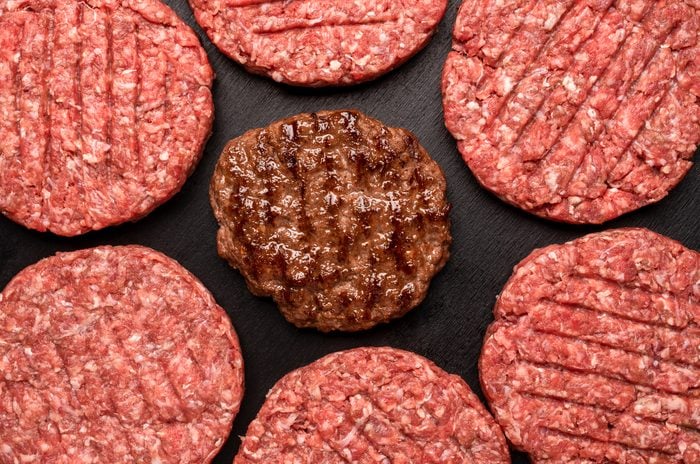Beef Prices Keep Going Up—Here’s Why
Updated: Feb. 12, 2024

Here's why beef is so expensive right now, plus tips for coping with rising beef prices at the store.
If you’re one of the 7 in 10 consumers that eats beef at least once a week, then you probably haven’t loved the 35% increase in beef prices over the past four years. Here’s what’s caused the price surge, plus tips on how to handle rising beef prices without giving up red meat.
What caused the rising beef prices?
“There are a lot of factors that have contributed to the increases in beef prices,” said Davey Griffin, PhD, professor and Extension meat specialist at Texas A&M AgriLife.
During the pandemic, food prices went up as the beef industry faced challenges getting products to consumers, Griffin explained. Drought conditions have also affected many cattle-producing parts of the United States over the past few years.
“During times of drought, beef producers are forced to reduce their herd to match the available supply of nutrients for each animal,” Griffin said. “Right now, cattle numbers are the lowest that they have been in over 10 years, but beef demand has continued to remain high, so the old story of supply and demand dictates higher prices for the available product on the market.”
It takes several years to rebuild and grow the beef supply since, at best, a cow might have one calf per year.
Americans can expect to eat more imported beef in 2024 as US beef production continues to decrease, according to USDA forecasts.
How can you save money on beef?
The sticker shock at the supermarket is real. But don’t let rising beef prices ruin your dinner plans or bust your budget. Even the most succulent roasted chicken won’t quell a beef craving.
You can weather this tough situation with a little know-how.
Choose higher-value cuts
To get the best value for your dollar, don’t just pick the cheapest cuts of beef. The best cuts of beef depend on the recipe you’re making—and sometimes they’re cuts you’ve never heard of.
“There are many lesser-known cuts that offer a better value for the consumer while not forfeiting quality or flavor,” said Hannah Klitz, owner of Oak Barn Beef in West Point, Nebraska. “Some of these cuts include the chuck eye steak, Denver steak, flat iron steak, flank steak, skirt steak and hanging tender steaks.”
These are called “butcher cuts,” Klitz explained, and while they’re occasionally challenging to find, they’re typically cheaper than familiar cuts like New York strip, ribeye and filet mignon.
Griffin recommended flat iron steak, also called top blade, as well as the petite shoulder tender and sirloin cuts. And don’t forget about ground beef. It’s versatile and less expensive.
Look for last-day discounts
Some stores discount beef that’s about to hit its sell-by date. Keep an eye out for these deals, and when you find them, stock up. Cook one package that night; freeze the rest.
Incorporate complementary ingredients
Red meat recipes with ingredients like peppers, onions, mushrooms and gravy enhance the savory flavors in beef so you can use less meat at any price point. Starches like potatoes, corn and carrots round out these dishes to leave you feeling satisfied.
- If you like beef flank steak, try steak fajitas with grilled peppers and onions plus a side of esquites.
- If you enjoy beef tenderloin, try grilled steak and portobello sandwiches with air-fryer potato chips.
- Boneless beef chuck makes a luscious German-style pot roast with bacon, potatoes, carrots and sauerkraut.
- Use ground beef in this simple shepherd’s pie with gravy, peas, carrots and mashed potatoes.
Use the best cooking methods and techniques for beef
With the right cooking method, you can make inexpensive cuts tender, juicy and flavorful.
- Pull out your slow cooker and turn inexpensive cuts into savory shredded beef.
- Braise your beef to make it tender and juicy, like in this braised beef stew.
- Tenderize beef with ingredients like Worcestershire sauce, as in this marinated steak recipe.
Up Next: Learn about more ways to save at the grocery store.
